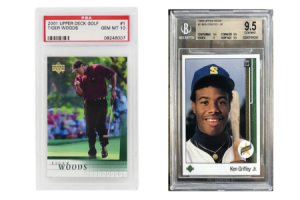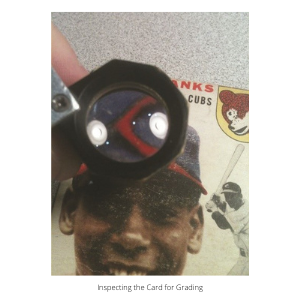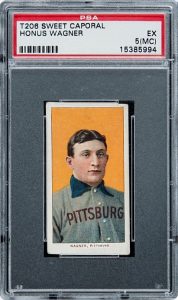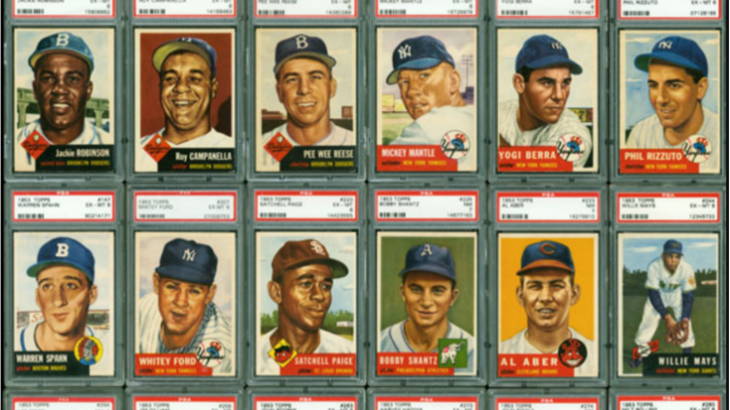Card collecting is a pastime that many of us remember beginning in our childhood and possibly staying with us as we grow into adults. Whether you collected sports cards like baseball trading cards and football cards, or, depending on your age, Pokemon and Garbage Pail Kids cards, the excitement of opening a new pack is something many have experienced. Over the past few years, the trading card industry has exploded and some found themselves in a search to begin or add to their collection and some began going through their inventory and getting them graded or authenticated to prepare for and get the best price for their treasured piece of memorabilia. When looking to valuate and get your cards on the market, one of the first things experts recommend is to have them graded.
What is card grading? Card grading is often defined as the practice of submitting a trading card to a third-party service. The card is then inspected for authenticity and ranked, usually on a 10-point scale, for the condition. The card is then assigned an overall grade, sealed in a tamper-proof holder or slab, and finally given a catalogued serial number. What does all of this mean and why today have companies like Beckett and PSA graded over 75 million cards? Card grading started in the mid-1980s and has grown into a multi-billion-dollar industry. Well-known companies like PSA (Professional Sports Authenticator) and Beckett have set the industry standard with smaller companies like SGC (Sportscard Guaranty) and CSG (Certified Sports Guaranty) picking up steam during the COVID-19 pandemic.

Each company offers a little something different for collectors and each has their very specific methods of grading to put out the best product. Collectors the world over have used the cards graded by these companies to set market prices, see how rare cards are with pop reports, and preserve their most wanted and most valuable cards in slabs. How does it all work though? While each company has its own formulas, cards are generally graded on four points. Graders look at the corners, the surface, the centering, and the edges. Each assessment works with the other to give the grader an overall grade usually on a 1-10 scale.

When it comes to corners, graders will look for any bend or white from under the main cardboard picture. For the surface, graders will look for imperfections on the front or back. It could be a small dent in the card from a finger pushing too hard or a slight print line. Sometimes the card has these imperfections by no fault of the collector but from the manufacturer. The centering of a card is where most cards will lose grades. Centering of the card refers to the position of the picture on the overall card based on the top/bottom and left/right. The final aspect they look at are the edges which are graded similar to the corners. Graders look for any bend in the edges or maybe some slight lifting where a card was shaken or put into a top loader too hard.
Once they have grades for each of these categories, they then use company-specific formulas to give the card a number or sometimes a letter grade. The card is then passed to a finalizer who will check the work of the individual grader to see if anything was missed, or if the card needs to be re-graded. When the finalizer signs off on the card, it is then sent to slab where it is encapsulated and photographed. The card is then shipped to the consumer where it can be admired in their personal collection.

Graded cards can be autographed or unsigned and you can find an extensive array of Autographed MLB Trading Cards, Autographed NFL Trading Cards, Autographed NBA Cards and more at SportsCollectibles.com!
This post brought to you by Sports Collectibles Blog Cat Card Expert, Meecko!

-Meecko is mischievous and loving. His favorite things include climbing his tower and breaking into his food container. You can usually find him in the evenings cuddled up next to the newest addition to his family.







